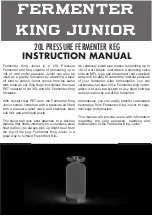
•
Sample rate: 125 MS/s
•
Minimum number of points: 1,048,576 samples
4.
Configure the function generator and generate a waveform with the following
characteristics:
•
Waveform: Sine wave
•
Amplitude: the Test Point value from the
AC Amplitude Accuracy Verification
•
Frequency: 50 kHz
•
Load impedance: the Input Impedance value from the
Note
These values assume you are using a NI 5402/5406 function generator.
For other function generators, the output voltage varies with load output
impedance, up to doubling the voltage for a high impedance load.
5.
Wait 0.1 second for the output of the function generator to settle.
6.
Acquire and measure the amplitude of the sine wave using the PXIe-5164 and the Extract
Single Tone Information VI. Convert the result from V
pk
to V
rms
. Record the result as
V
PXIe-5164 Measured
.
7.
Measure the amplitude of the sine wave in V
rms
using the DMM. Record the result as
V
DMM Measured
.
8.
Calculate the amplitude error using the following formula:
AC Voltage Error
= 20 × log
10
(
V
PXIe-5164 Measured
/
V
DMM Measured
)
9.
Compare the amplitude error to the appropriate Limit from the
10. Repeat steps 2 through 9 for each configuration listed in the
11. Disable the function generator output.
12. Connect the DMM and function generator to channel 1 of the PXIe-5164 as shown in the
AC Verification Test Connections
figure and repeat steps 2 through 9 for each
AC Amplitude Accuracy Verification
13. Disable the function generator output.
Verifying
50 Ω
Passband Amplitude Flatness and
Bandwidth
Follow this procedure to verify the 50 Ω analog passband amplitude flatness and bandwidth
accuracy of the PXIe-5164 by generating a sine wave and comparing the amplitude measured
by the PXIe-5164 to the amplitude measured by the power sensor.
Before performing this procedure, complete the
calculate the
splitter balance
and
splitter loss
of your power splitter.
22
|
ni.com
|
PXIe-5164 Calibration Procedure
















































